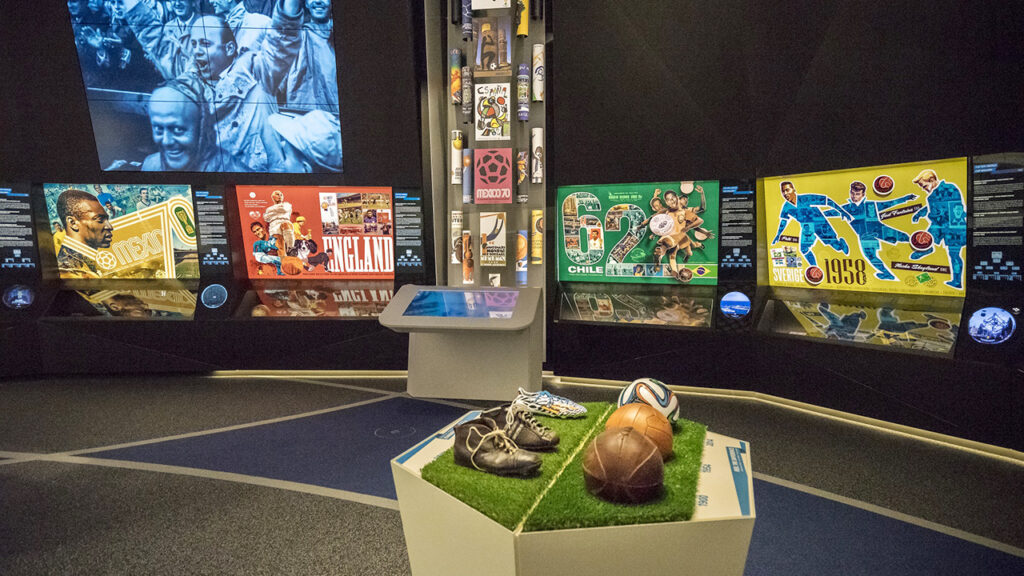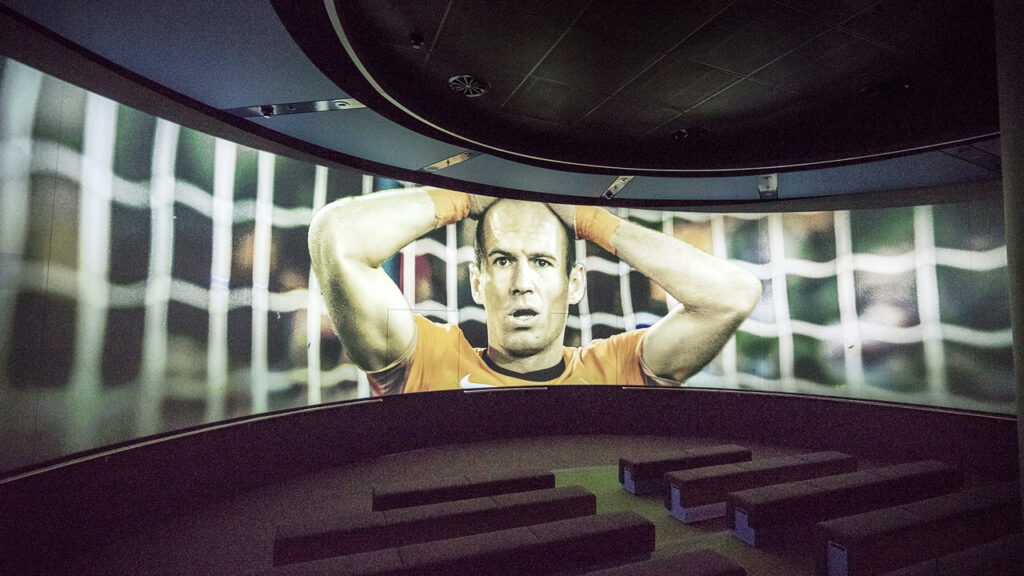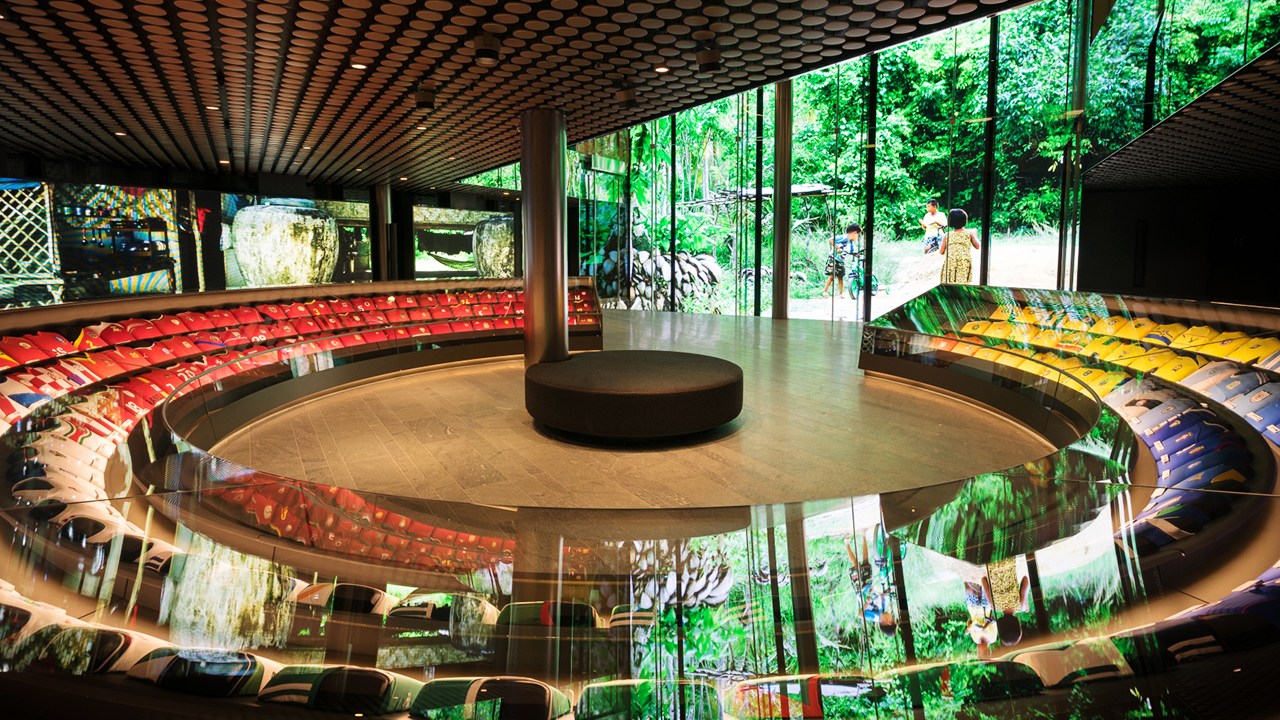Football’s status as the globe’s most popular sport is often explained by the limited number of objects required to play it: something roughly spherical — be it a tennis ball or wrapped plastic bags — and markers for goalposts.
But if one was to tell football’s history through objects, which would prove most illustrative? Here are some contenders: the 1863 document in which England’s Football Association first outlined the laws of the game, a painting of Tang dynasty soldiers playing cuju, the ball sport by which China sometimes offers itself as football’s true progenitor, and the haggard face of a T-Model football used at the inaugural World Cup, Uruguay 1930.
It’s a question all 211 football associations affiliated with FIFA will be answering in the coming months as the FIFA Museum in Zurich organizes its first collaborative exhibition in the run-up to the 2022 World Cup. Each association has been invited to submit a single object representing their football culture before the museum team in Switzerland builds an exhibition showcasing the digital and interactive practices that have flourished in the cultural sector over the past year. One object that won’t be on display, however, is the original Jules Rimet Trophy which was stolen in 1983 in Brazil and has never been recovered.

Held in the run-up to the 2022 World Cup, the 211 exhibition will array football-related objects from FIFA-affiliated football associations. Image: © FIFA Museum
211 was announced by Marco Fazzone, the museum’s Managing Director, at the FIFA Museum Conference, an annual forum safeguarding football cultural heritage and allowing national football museums to connect and collaborate. Here, Fazzone tells Jing Culture & Commerce about the inspiration behind the exhibition, how the museum is integrating digital elements, and what makes for a great football object.
To kick things off, what prompted the 211 exhibition?
Football’s more than just a game; it’s a global cultural phenomenon that inspires and connects people. We want to share the magic of football with everyone around the globe by featuring all the different unique football cultures and how they are lived in all regions — through collaborating with all 211 FIFA Member Associations who know their respective football cultures better than anyone else.
What makes a compelling “distinctive football object”?
Football culture is very emotional. Each history-making moment in football is connected with millions of different subjective memories and feelings and every football fan has a unique and individual experience around any history-making moment. This is what makes football so special in a cultural and exhibition context. It’s not only about the object; it’s more about the stories behind the object and the unique memories and emotions that the object triggers.

The FIFA Museum in Zurich currently houses more than 1,000 exhibits, including significant artifacts, memorabilia, and photographs that document the history of the football and its governing body. Image: © FIFA Museum
Are there any specific distinctive football objects that come to mind?
On the one hand, a distinctive football object can be a match-worn shirt, a pair of boots or a pair of goalkeeper gloves from a player that made history while wearing this object in his history-making moment. On the other hand, when it comes to reflecting on the 211 different and unique football cultures in the world and how they are lived, it can be — for example — an item that is typically worn by fans in the stadium and that stands symbolically for the unique football identity of his region, like a Croatian water polo cap that Croatia’s fans wore to support their football national team and that has become a symbol for their football culture.
Please discuss some of the interactive and immersive elements of the physical exhibition we can expect.
We are planning to implement interactive and immersive elements in the exhibition. One very interesting element could be to play with sound and to have our visitors interact with different well-known or less known fan chants that stand for the unique football cultures in their different regions.
And will it exist digitally?
Parts of the exhibition will certainly become available digitally as well, especially because we want to share the content with all 211 FIFA Member Associations. We are looking forward with huge excitement and passion to hopefully make the exhibition 211 available for everyone in the world.
How will the exhibition be curated/organized — by theme, region, or possibly chronologically?
The content for the exhibition will not be curated only from the FIFA Museum, but also in close collaboration with the 211 FIFA Member Associations. They will get the chance to send us the object that symbolizes their regions’ unique football culture the best. Based on the objects and the stories that we receive, we will develop thematic content that allows the visitor to discover different perspectives from football cultures around the world. This exhibition will not only be about the past, but also about the present.



